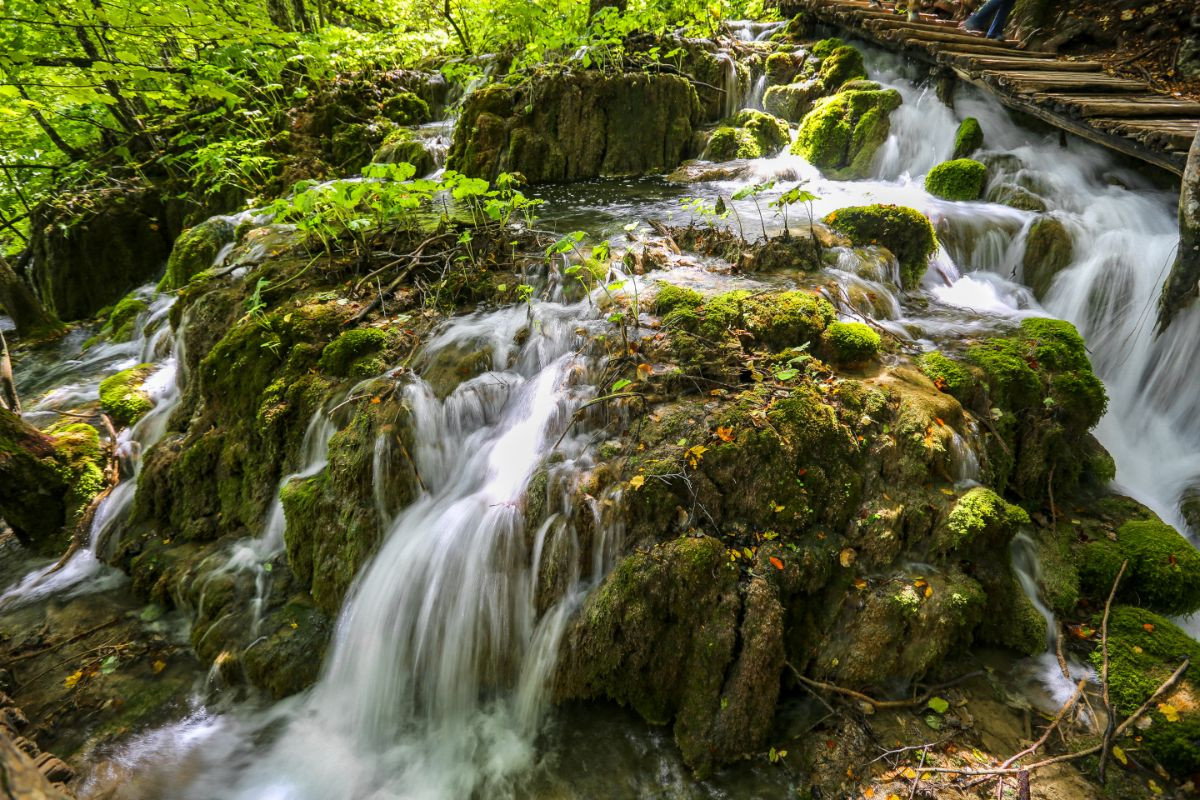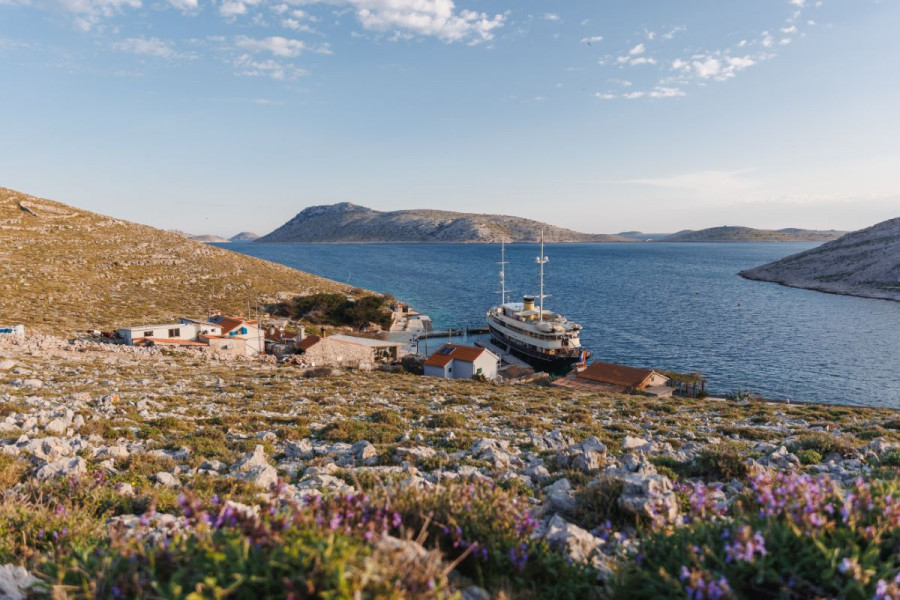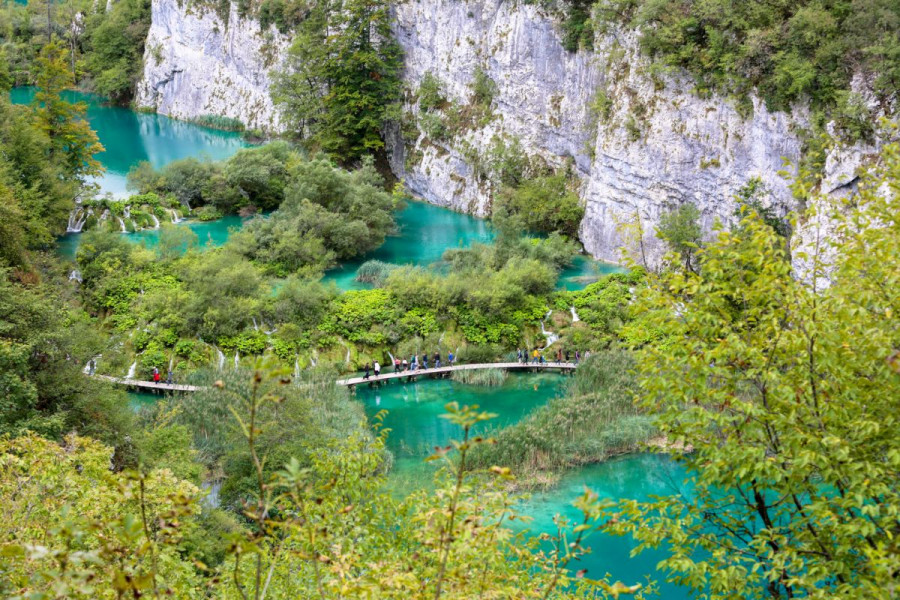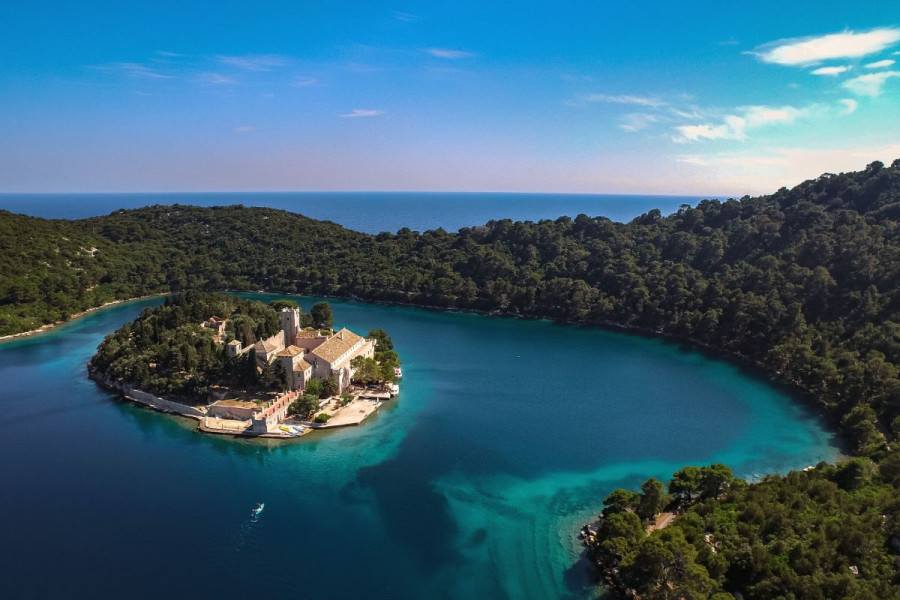
Every yacht charter request starts with the inquiry, "What is the best recommendation for a seven days stay in Croatia?”
Naturally, the visitor anticipates having a dream vacation while seeing the finest of Croatia, tasting the greatest cuisine, etc. If you are a nature lover this adventure might be on your bucket list. While cruising the stunning Adriatic Sea, we offer you the ability the visit to four Croatian National parks that are situated at the sea coastline. This is quite an intriguing and exciting addition to incorporate into the seven-day charter yacht trip program. If you are up for the adventure, let us thoroughly plan it all out for you so that you have the best experience possible. Moreover, as we learn more about the guest’s preferences, such as what they are interested in seeing, we would recommend parks that are most likely to attract their attention given the unique characteristics of our national parks. Croatia is a popular charter destination for a variety of reasons, one of which involves the fact that four of the eight national parks are located on the stunning Croatian coast. Furthermore, twelve nature parks, two of which are situated along the routes of various charter companies, should not be disregarded. It would be a shame to lose out on the chance to charter yachts without seeing Lastovo, Mljet, and Kornati. Furthermore, every year charter guests become increasingly interested in the hidden natural pearl of Telašćica as it is a spot for peaceful anchoring and enjoyment of nature.
But let’s not get ahead of ourselves, let’s start in order…
Eight national parks are protected by the Republic of Croatia.
National Park Kornati

The geological formation of the Kornati archipelago is quite intriguing, with an exceptionally rough coastline of 89 inhabited islands by living communities adapted to harsh climate conditions. The islands have fascinating shapes, with terrain that is mostly made up of unusually shaped rocks. Although karst is found throughout the Adriatic coastline, Kornati stands out as a particularly karst-shaped structure. As the living world is more diverse in the sea than on land, the islands have few and mostly seasonal residents to provide sailors and nautical tourists with a unique gastronomic experience. It is worth mentioning the Opat restaurant on the island of Opat, which has a phenomenal gastronomic approach and offers views of the Adriatic botanical and aquatic life that creates a symphony of experiences that linger long after visiting this magical place.
Krka National Park
The Krka River flows through the towns of Šibenik and Knin, cutting through the mountains and generating a canyon that gives the sense of being in the setting of a 1950s western film. However, you are still in Croatia, which offers landscapes straight out of a movie that take your breath away. On the way to Skradin, we can take a journey via the Saint Ante channel towards Lake Prokljan. There is a space for our yacht to anchor, and a tour with the park's crew's boats is can be provided through the Krka National Park. The journey continues by travelling through the karst phenomenon that generates seven waterfalls on travertine barriers along the Krka River's path. The most interesting are Bilušića waterfall, Brljan, Manojlovački waterfall, Rošnjak, Miljacka waterfall, Roški waterfall and Skradinski waterfall. This protected area is home to a vast number of autochthonous plants, with up to 860 plant species recorded. The park contains the first hydroelectric power plant in Europe, which was created in 1895, just two days after the first power plant on Niagara Falls. The territory of the national park becomes a world-famous hydroelectric power plant thanks to Nikola Tesla, a Croatian innovator and scientist, which, of course, can be visited during an Adriatic cruise, as can all the other historical sites in this area.
Brijuni National Park
Brijuni National Park is an island group of 14 islands with islets, hidden bays and dreamy sandy beaches. It is located on the Istrian peninsula's south-western shore and is considered an essential climatic area with a unique landscape characterized by preserved historical and cultural peculiarities. The majority of the island is covered by a holm oak forest, which has been shaped over the last 200 years to form lawns and promenades which serve well for guests as they create the shade during summer's sweltering temperatures. The park's region is home to a great number of indigenous animal species, with the abundance of birds standing out due to the presence of wetlands on the islands. One of the oldest olive trees in this region of the Mediterranean, planted 1,700 years ago and is still bearing olives, may be found on the island of Veliki Brijun. Without major human influence, the region of this national park has preserved its original beauty and natural environment, allowing plant and animal species' habitats to thrive undisturbed over generations. Furthermore, there are over a hundred archaeological sites and historical monuments of great significance that are essential for scientific research on species origins and natural science studies. It is noteworthy and remarkable that not only can you find dinosaur footprints on Cape Ploče and the Barban peninsula, but that they are living proof of the existence and habitation of this species of prehistoric reptile on Croatia's shore.
Mljet National Park
Mljet National Park is located on Mljet Island, which is the most forested island in the Adriatic. Since forest covers up to 90% of the park, it has an unparalleled biodiversity of conserved species. The indigenous woodlands of holm oak and Aleppo pine transform into unique experiences for visitors, who can explore on foot or by bicycle. Malo and Veliko Jezero, in the heart of Mljet, were formed by the submergence of a karst valley. A monastery, which was founded in the 12th century and is still in use today, can be visited on the little island of St. Mary, which is located in the center of Veliko Jezero. The entire park contains treasured Roman archaeological sites as well as the remains of Roman thermal baths. Everything exudes tranquility and nature, which, according to the archives, the Romans knew how to appreciate. It is a worthy site to visit, according to us :)
Plitvice Lakes National Park

Although it is Croatia's oldest park, Plitvice Lakes National Park is a jewel among parks, ranking among the top ten most beautiful in the world. You definitely need two days to tour this area and see all of the 16 tiered lakes, waterfalls, and well-kept walkways. Unfortunately is it not located on the sea coastline, but on land, and is not included in the Adriatic cruise itinerary. However, we strongly recommend stopping by on the way from Split to Zagreb. It is open all year and offers lodging as well as a variety of local gourmet pleasures. The Plitvice Lakes were added to the World Natural Heritage List by UNESCO in 1979.

